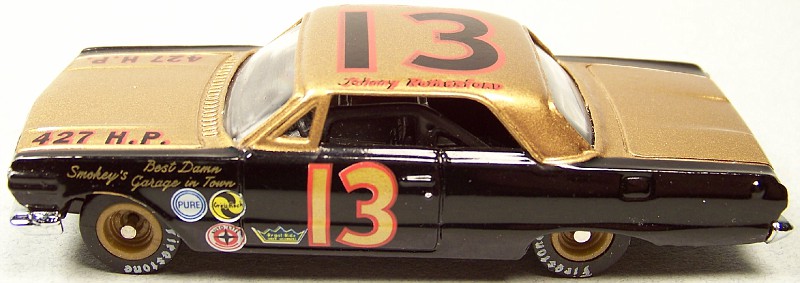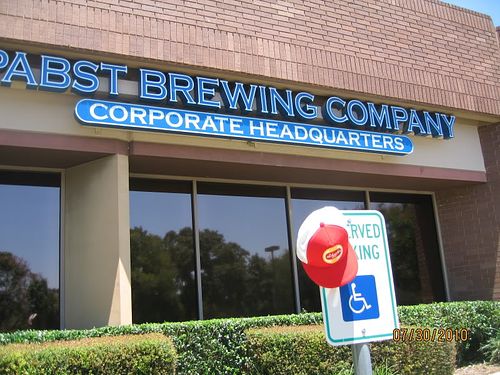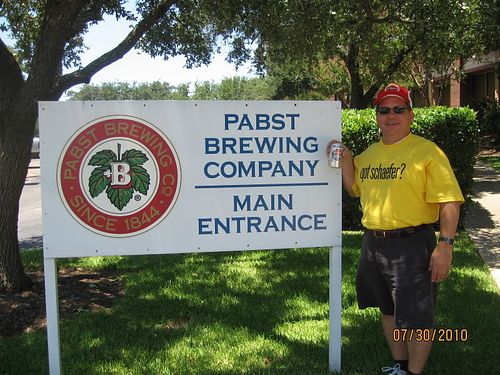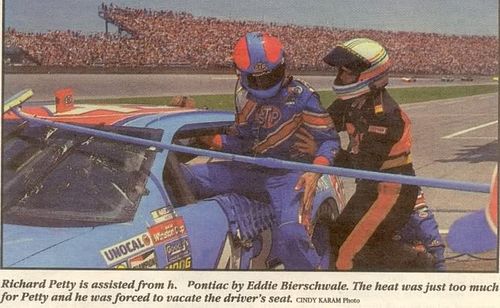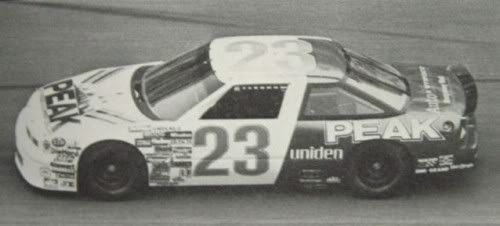A Sports Illustrated article from March 1963 about Smokey and the Chevy engines at the 1963 Daytona 500:
March 04, 1963
Big Smoke Screen In Daytona
Henry Yunick (above) may or may not have connections with General Motorsbut oh! how those 'nonracing' Chevrolet engines do purr (note - photo of Smokey not reproduced)
The 500-mile race in Daytona Beach, Fla. is only 5 years old, but already it is securely entrenched as the most important event in American stock car racing. Sunday, despite dour forecasts of high winds and hard rains, the crowds came71,000 people in allto watch cars resembling their own race wheel to wheel at astonishing speeds up to and a bit over 165 mph, some of them driven for the first time in the Daytona 500 by such Indianapolis heroes as Parnelli Jones, A. J. Foyt and Troy Ruttman.
But unless the customers arrived early at the 2-mile International Speedway and poked into things carefully, they missed out on a juicy optional extra that bore a certain resemblance to Scotland's Loch Ness monster. This was the beginning of a racing season in which Detroit's Big Three manufacturers would rip into one another as they had not since 1957 and, like the monster, General Motors was everywhere and nowhere. Scouts bringing breathless reports of a real, palpable presence somehow never managed to get and hang onto so much as a bolt, much less a live, card-carrying GM man. The closest anybody came in that direction was a leathery mechanic, Henry (Smokey) Yunick, whose only known racing connection to Detroit was a new 427-cubic-inch engine hidden under the hood of a 1963 Chevrolet. That was some connection, however.
Followers of racing will recall that last June, Henry Ford II withdrew the Ford Motor Company from an Automobile Manufacturers of America agreement of five years' standing which barred the automakers from participating in racing and other speed and high-performance events. Chrysler took to advertising performance with gusto. But General Motors did not follow suit, nor has it yet done so. Indeed, Board Chairman Frederic G. Donner told Detroit newsmen last week that GM had made the AMA "recommendation," as he termed the pact, part of interior GM policy that would stay in effect no matter what other automakers did. But curiously, as became apparent in events preliminary to the Daytona 500, a quartet of '63 Chevrolets with the new 427 engines (the NASCAR maximum is 428) were the hottest cars on the grounds. The Chevies blitzed two 100-mile races, finishing one-two in both (although one was penalized to a lower place on a technicality).
Yet in the victory lane there wasn't a soul who had ever seen GM's Detroit headquarters, except maybe from a car passing by on Woodward Ave. To be sure, there were Robert (Junior) Johnson, 32, a hefty chicken farmer from Ronda, N.C., who had won the first race with an average speed of 164.083 mph, and the man who owns his Chevy, Ray Fox, operator of a Daytona speed specialty garage; there were John Rutherford, 24, of Fort Worth, slight and cheerful, the week's rookie driving sensation and winner of the second race at 162.969 mph, and the owner of his Chevy, Daytona's Henry Yunick, the foxiest tool-and-wrench man in racing.
"How was that, boss?" Rutherford chirped to Yunick. Then to assembled photographers he said, "Here's the man who did it, it wasn't me. I just set there and rode."
It detracts nothing from Yunick's professional skill, however, to point out that the man who really "did it" was the anonymous Detroit designer of the new Chevy V-I. One awed craftsman, employed by a competitor of GM, paid the engine ultimate tribute (while taking a jab at GM's no-racing posture). "A real racing engine," he marveled.
How then did the engine get into Yunick's and the other three hot Chevies? What's more, what about the sweet 1963 Pontiacs in the stable of the Indiana speed specialist, Ray Nichels? And what about the ultraspecial Chevy engines that are going into Indianapolis racers being built on the West Coast by Mickey Thompson, the speed-record king?
If the reader supposes that these are instances of GM's being in racing, he is, at least so GM says, dead wrong. GM has developed nonracing into a high art. To oversimplify an inordinately complicated subjectinfested with semantic trapsit seems clear that GM attaches no stigma to racing. It is pleased when GM cars win, it continues, as in the past, to build high-performance components usable in racing cars, but it does not actually field racing teams and will continue not to advertise victories by cars bearing GM names.
One should not forget that in the last seven or eight years General Motors has gained much from high performance. Beginning in the mid-1950s when Edward N. Cole became boss at Chevrolet, the Chevy was transformed from a poky car into a fire-breather. The Corvette sports car emerged and began to win races. Semon (Bunky) Knudsen worked the same magic with Pontiac. Cole is now chief of all GM car and truck divisions, and Knudsen has succeeded him at Chevrolet, queen of the car divisions. Racing men find it impossible to believe that Knudsen was not responsible for 1) providing the first batch of new hot Chevy engines to top mechanics like Yunick, whom he would be pretty sure to recognize if they met on the street; and 2) getting the engine goods to Thompson for his Indy racers.
Ford was provoked to return to overt racing in no small part because GM cars during the ostensible blackout had done so stunningly well in stock cars, sports car and drag races and had successfully won, thereby, the allegiance of many young and young-minded customers. Chrysler, although it promptly followed Ford's lead, has not instilled the same spirit of candor in the men who serve as its stock car racing arm. They are the NASCAR veteran Cotton Owens, who builds and campaigns two Dodges; Lee Petty (two Plymouths, one driven by his son Dick); and Jack Smith (one Chrysler). Petty was nothing if not evasive in Daytona the other day: "They [ Plymouth] let me play ball and I don't mind playing ball with them. And sometimes they let me bat." By way of contrast, Benson Ford himself, second of the three Ford brothers, showed up for the Friday racing, told the crowd he found the speedway "perfectly beautiful" and settled in for the weekend.
Ford Division Performance Chiefs Jacque Passino and George Merwin were usually to be found in the vicinity of John Holman's shop. As most racing people know, Holman and his partner, Ralph Moody, put into racing trim and then campaigned the outstanding Ford stockerscars which in 1962 won four of the seven major NASCAR races.
Before Friday, when the Chevrolet engines, if uncommonly powerful, were thought to be too new to be reliable for 500 miles of racing, John Holman was confident that his four Fords were the cars to beat. He was not quite so buoyant after the trouble-free Chevy sweep. More cheerful was Holman's top driver, Fred (Fearless Freddy) Lorenzen, a blond, dimpled, good-looking charger who is said to be the idol of the bobby-sox set in Dixie. "I think," said Freddy, "that I can win the race. I've got a very good feeling."
He was very nearly right. So, too, was Holman. The 500-mile test on Sunday proved just about 250 miles too long for the Chevy engines, which, despite all Smokey Yunick and others could do to get them ready, were still too new to be completely dependable in a grind of that sort. As Benson Ford peered openly and happily at the swift, thunderous cars through yellow-tinted sunglasses, the racewhich was delayed nearly two hours by rainbecame a Ford parade in its later stages. The first five finishers all were Fords, with Lorenzen's second. He was beaten by 270-pound DeWayne (Tiny) Lund in as popular a result as you are likely to find anywhere. A week earlier Lund had helped drag the winning car's regular driver, Marvin Panch, from a flaming Ford-engined Maserati. His reward was Sunday's ride. Even a GM man wouldn't begrudge victory to a man like thatand he shouldn't. The Chevies will be back.
--
"Any Day is Good for Stock Car Racing"
